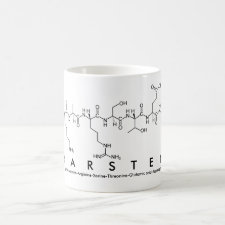
Authors: Paruli E, Soppera O, Haupt K, Gonzato C
Article Title: Photopolymerization and Photostructuring of Molecularly Imprinted Polymers.
Publication date: 2021
Journal: ACS Applied Polymer Materials
Volume: 3
Issue: (10)
Page numbers: 4769-4790.
DOI: 10.1021/acsapm.1c00661
Abstract: Over the past few decades, molecularly imprinted polymers (MIPs) have become extremely attractive materials for biomimetic molecular recognition due to their excellent affinity and specificity, combined with robustness, easy engineering, and competitive costs. MIPs are synthetic antibody mimics obtained by the synthesis of 3D polymer networks around template molecules, thus generating specific binding cavities. Numerous efforts have been made to improve the performances and the versatility of MIPs, with a special focus on ways to control their size, morphology, and physical form for a given application. Gaining control over these parameters has allowed MIPs to adopt a defined micro- and nanostructure, providing access to nanocomposites and micro/nanosystems, with fine-tuned properties, which become critical for modern applications ranging from chemical sensing to bioimaging and medical therapy. In this rich and complex context, light as a cheap and versatile source of energy has emerged as a powerful tool for structuring MIPs. This review presents the most recent advances on structuring MIPs at the nano/microscale, using light as a stimulus to trigger the polymerization process. Thus, after a general introduction on radical polymerization of MIPs, with a special emphasis on photopolymerization by UV and visible light, the reader will be presented with ways of structuring MIPs by processes that are inherently spatially confined, such as localized photopolymerization and lithographic techniques, supported by representative examples and complemented with a final outlook on future trends in this field
Template and target information: review - MIPs in photopolymerisation and photostructuring
Author keywords: Molecularly imprinted polymers, photopolymerization, Photostructuring, mask lithography, maskless lithography, stereolithography, microstructures, nanostructures



Join the Society for Molecular Imprinting

New items RSS feed
Sign-up for e-mail updates:
Choose between receiving an occasional newsletter or more frequent e-mail alerts.
Click here to go to the sign-up page.
Is your name elemental or peptidic? Enter your name and find out by clicking either of the buttons below!
Other products you may like:
 MIPdatabase
MIPdatabase









